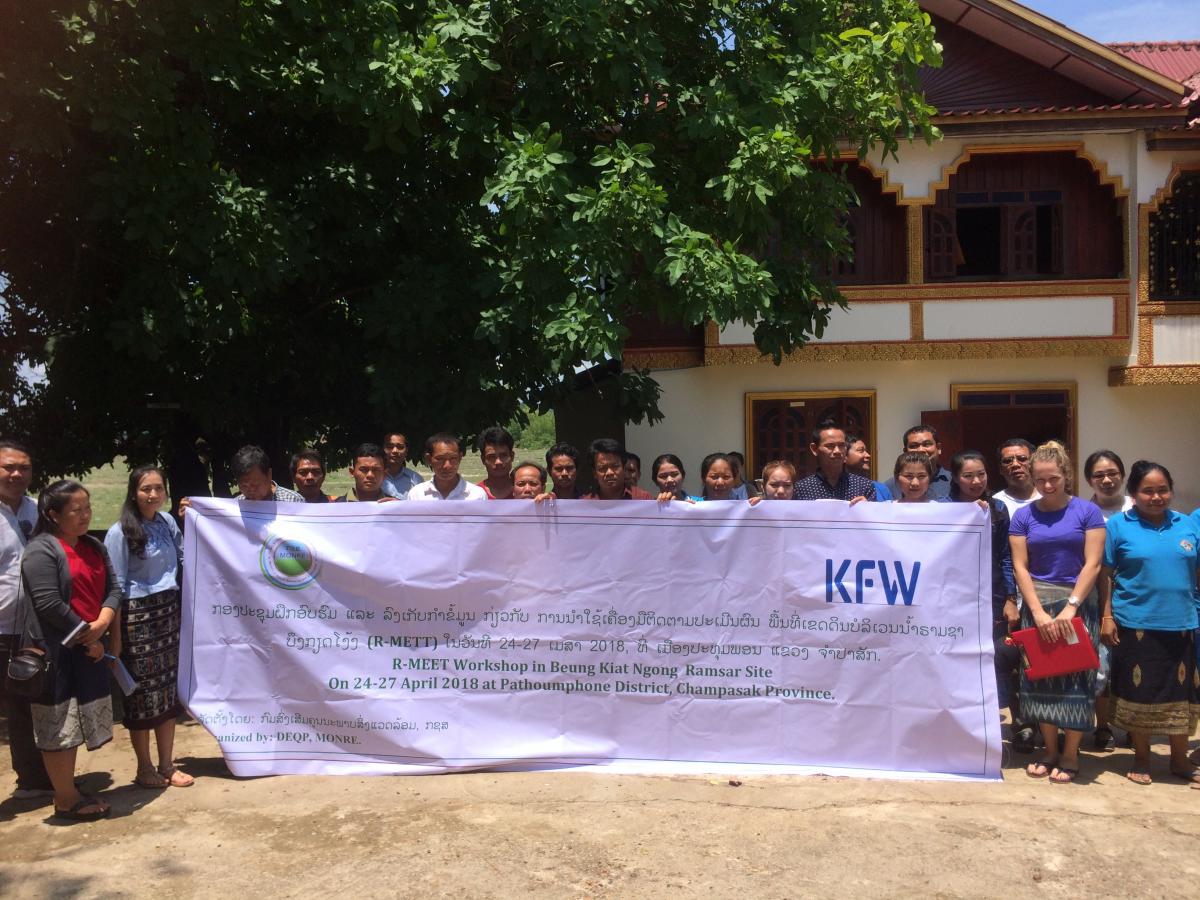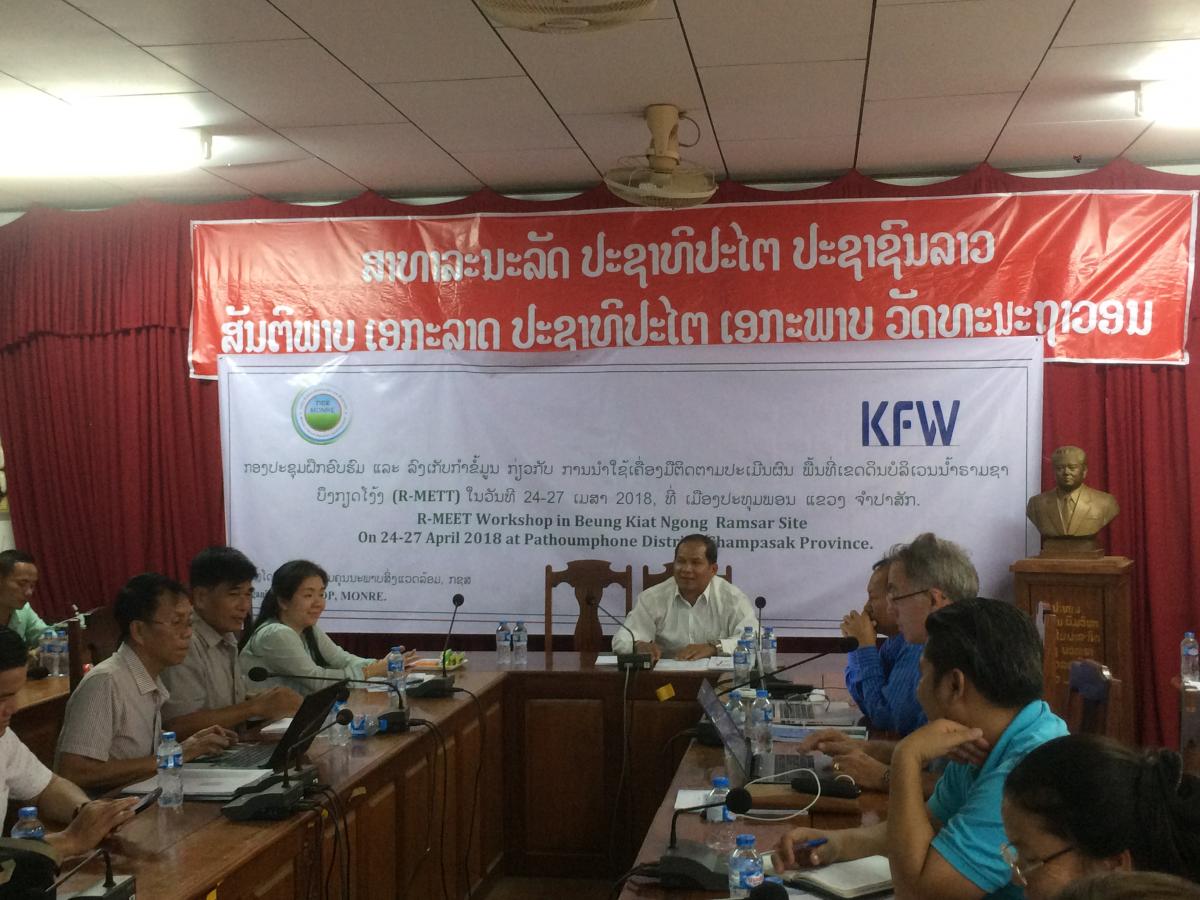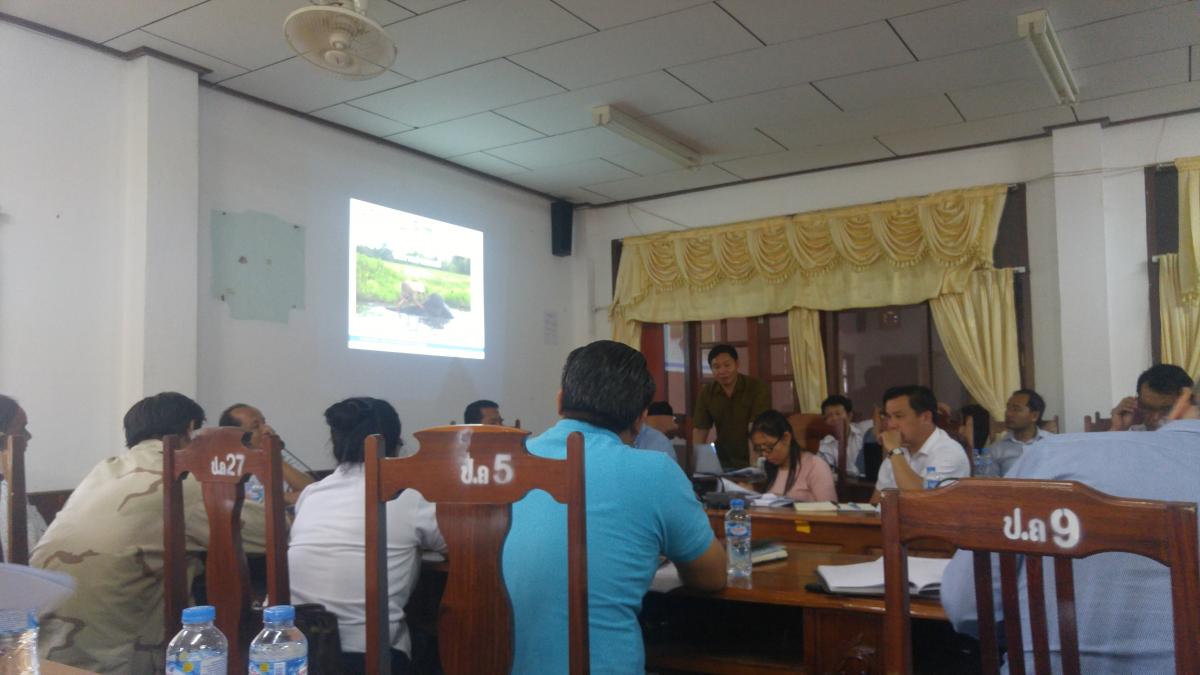Workshop uses Ramsar Management Effectiveness Tracking Tool (R-METT) to assess site in Lao PDR
From April 24 to April 27 IUCN Lao PDR facilitated a workshop in Beung Kiat Ngong (BKN) wetlands in Pathoumphone District, Champasak Province. The aim of the workshop was to implement the Ramsar Management Effectiveness Tracking Tool (R-METT), which assesses the effective management of Ramsar sites over time in an effort to ensure the sites are achieving the objectives for which they were established.
Opening remarks were by Mr. Lonkham, the head of the Department of Environmental Quality Promotion in Lao PDR. He said he was “happy to host the first R-METT workshop in Laos” and that “the R-METT is very important for the future management of the wetlands.”
Participants of the workshop were community members from the Beung Kiat Ngong Ramsar site, officers from the Ministry of Natural Resources and Environment and the Ministry of Agriculture and Forestry at both district and provincial levels, as well as representatives from the tourism and education sectors.
This workshop provided an introduction to the R-METT for site managers, government officials, and members of the villages surrounding the Ramsar site. Two days were spent undertaking a full assessment of the site, and the last day was spent in community stakeholder consultation, addressing selected questions from the R-METT that were community-focussed.
This workshop was also an opportunity to provide the next steps for future BKN management. The R-METT provides site managers with guidance on what issues need to be addressed to ensure future sustainable use of the site. Information collected from the R-METT can help management to anticipate new issues and to respond to them rapidly and effectively.
Amy Scott, Water & Wetlands Programme Advisor, stated: “Having an R-METT process in place to evaluate management effectiveness is a very important step in improving overall site management, and for maintaining the important biodiversity values of Beung Kiat Ngong.”
There are two designated Ramsar sites in Lao PDR: the Xe Champhone site in Savannakhet Province and Beung Kiat Ngong in Champasak Province. The Convention on Wetlands of International Importance, the Ramsar Convention, is the intergovernmental treaty that provides the framework for the conservation and wise use of wetlands and their resources.
The R-METT is a rapid assessment using a series of questions to understand the context of the site and the current state of planning, inputs, and processes. The tool assesses threats to the site such as overharvesting of resources, habitat degradation and impacts from climate change, and then evaluates key aspects of management such as regulation, protection systems, planning, education, community involvement, governance, and monitoring.
In the future IUCN hopes to support government counterparts to develop capacity among communities and staff in wetland management, monitoring and Ramsar implementation, improve regulations and law enforcement, and expand knowledge of the site and its biodiversity by conducting more surveys and research on species and vulnerable habitats to support management and decision making.







